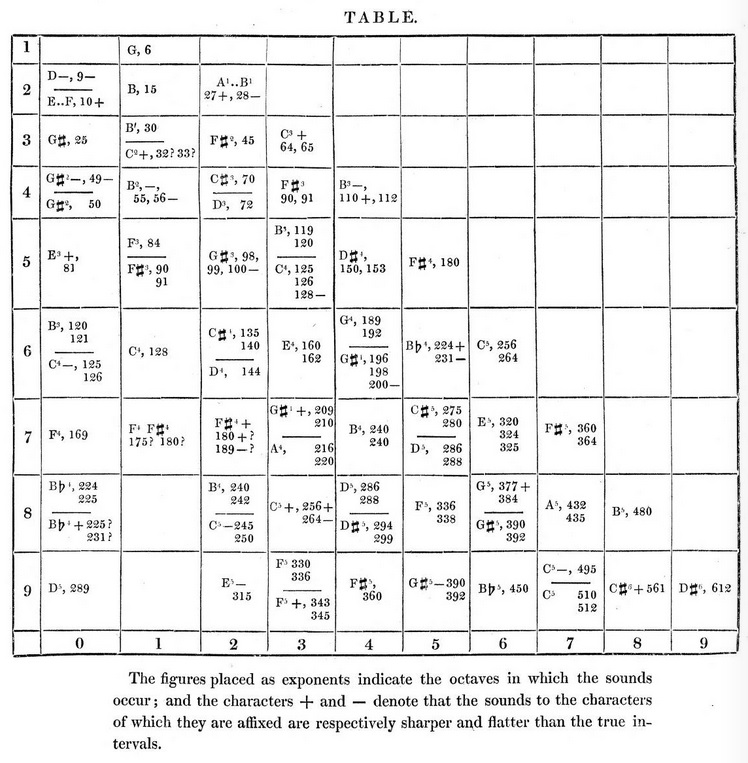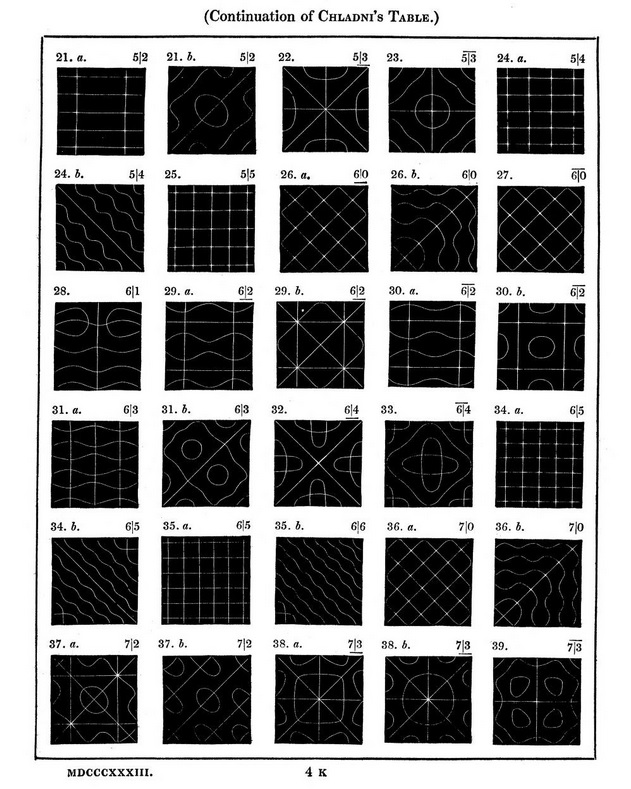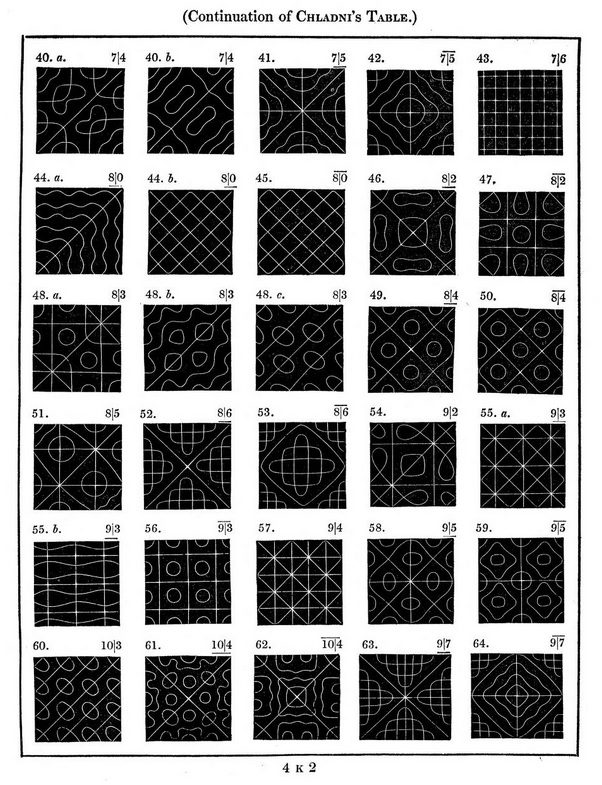
Ernst Florens Friedrich ...
2014 August 4

I had originally intended to present Chladni's original 1787 account of vibrational sand-patterns. Unfortunately, although there are several English translations available, all are apparently under copyright, and it does not seem worth the effort to create a new one. Instead, we will settle for a short synopsis by Charles Wheatstone, whose own work on the subject will appear in the next installment.
The beginning of
"On the Figures obtained by strewing Sand on Vibrating Surfaces,
commonly called Acoustic Figures,"
by Charles Wheatstone, Esq.
Communicated to the Royal
Society by Michael Faraday, Esq., D.C.L., F.R.S., &c., &c. &c.
[Philosophical Transactions of the R.S.L. 123, 593 (1833)]
Wheatstone's words are in bold.
Received February 12, --- Read March 14, 1833.
Half a century has nearly elapsed since the attention of philosophers was first called to the curious phenomena exhibited when sand is strewed on vibrating surfaces. Long before this time, Galileo had noticed that small pieces of bristle laid on the sounding-board of a musical instrument, were violently agitated on some parts of the surface, whilst on other parts they did not appear to move ; and our own countryman Dr. Hooke, whose sagacity in anticipating many of the discoveries of later times has been so frequently remarked, had proposed to observe the vibrations of a bell by strewing flour upon it. But to Chladni is due the sole merit of having discovered the symmetrical figures exhibited on plates of regular forms when caused to sound. His first investigations on this subject, Entdeckungen über die Theorie des Klanges, were published in 1787; this work was followed by his Akustik in 1802, and his Neue Beyträge zur Akustik, 1817. A French translation, by himself, of his second work was published at Paris in 1809.
All the figures obtained by Chladni on square surfaces are delineated [below]; they are copied from the Neue Beyträge, which work contains his most mature experiments ; but not having been translated either into French or English, it is but little known in this country. The following are the general results deduced by Chladni from his observations respecting these figures: his works may be referred to for the details omitted, and for those concerning the vibrations of plates in general.
In all the modes of vibration of a square or rectangular plate, the figures, even if they consist of diagonal or tortuous lines, may all be referred to a certain number of nodal lines in the two directions parallel to the sides.
To establish a convenient notation for these figures, he represents the lines in the two directions by numbers separated by a vertical line. Thus, for example, 3|0 signifies the mode of vibration, in which there are three lines in one direction and none in the other ; 5|2 denotes that in which there are five lines parallel to one side, and two to the other, &c.
The nodal lines, which may always be considered as having been originally straight, may curve themselves more or less ; and in general the flexions of these lines, whether they adjoin each other or are separated by a straight line, mutually approach to or recede from each other. In some modes of vibration the nodal lines are never straight.
In some instances, the same mode of vibration may manifest itself in two essentially different ways, according as the flexions of the lines, or the greater number of them, are inward or outward ; in the first case, the sound is usually graver than in the second. This difference is remarked in those figures where there is an entire number of flexions, as in 2|0, 3|1, 4|0, 5|3, 6|2, &c. ; but never in those figures where there are 1½, 2½ &c., as in 3|0, 4|1, 5|0, 5|2, &c. To distinguish the first from the second figure, Chladni places a horizontal line above the numbers in the first case, and below them in the second case, thus, 4|2, 4|2
When two or more figures having the same notation, occur in the Table, the others are to be considered as distortions of the first, occasioned by altering the fixed points, and the place at which the bow is applied. If four plates of the same size, and upon which the same figure has been produced, be placed together so as to form a larger square, this compound figure may also be more or less accurately produced on a single larger plate. Several instances of this may be seen by reference to the Table of figures. The following Table contains the relative sounds (expressed both by their musical names and the number of their vibrations,) of all the modes of vibration of a square plate, experimentally ascertained by Chladni. The horizontal series of numbers denotes the lines parallel to one of the sides, and the vertical series those parallel to the other. The figures placed as exponents indicate the octaves in which the sounds occur; and the characters + and - denote that the sounds to the characters of which they are affixed are respectively sharper and flatter than the true intervals.




SINGING IN CHLADNI'S GARDEN